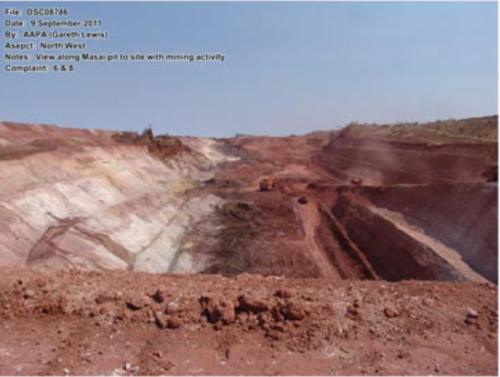02 August 2013

Historic conviction of miner for desecrating sacred site
The historic prosecution of a Singapore-based mining company for the desecration of an Aboriginal sacred site in the Northern Territory has prompted the Aboriginal Areas Protection Authority (AAPA) to call for miners to respect the law and honour their agreements, in the middle of a national mining boom.
OM Manganese Ltd was today fined $150,000 in the Darwin Magistrates’ Court for one count of desecration to, and one count of damaging, the ‘Two Women Sitting Down’ sacred site at their Bootu Creek manganese mine on Banka Banka station, 170km north of Tennant Creek.
The Magistrate Sue Oliver said that OM (Manganese) had chosen profit before protection at its mine and had therefore contravened the NT Sacred Sites Act 1989.
The CEO of AAPA, Dr Ben Scambary, said it was the first-ever case of desecration to be successfully prosecuted under Australian law and was a timely (and precedent-setting) reminder that poor management and the disregard for important Aboriginal sacred sites would not be tolerated by the law.
Dr Scambary said that although Aboriginal custodians were greatly distressed by the site damage, they had shown great faith in the court process and had repeatedly travelled 1000km by road from Tennant Creek to attend the many hearings of the trial. Yet little could be done to rehabilitate the sacred site as it had collapsed after OM Manganese continued blasting and excavating ore next to it, despite knowing that a collapse was imminent. Ultimately, the site collapse totalled 17,000 cubic metres of ore, soil and vegetation.
Dr Scambary said that under the NT Sacred Sites Act 1989 the site’s custodians were ineligible for any compensation and fines would go directly to the Northern Territory Government.
“When a sacred site is desecrated or damaged it tears the social fabric of the affected community as the harmony of those people is inherently linked to that sacred site,” he said.
“Sacred sites are important to all Australians as most of this nation’s cultural integrity, historical significance and tourism appeal comes from the 50,000 years that Aboriginal people have been caring for their country, their seas and their sacred sites.
“This site has great significance to the custodians and relates to a dreaming story about a marsupial rat and a bandicoot who had a fight over bush tucker. As the creation ancestors fought, their blood spilled out, turning the rock a dark-red colour that is now associated with manganese.”
Dr Scambary said that most miners in the NT were operating in a responsible manner. He also stressed that most Aboriginal people were not ‘anti-mining’ but they did insist that their sacred sites be protected.
“AAPA is the first point-of-call regarding the protection of sacred sites for anyone wishing to mine or develop lands or seas in the NT as we have, with the custodians, recorded where the sacred sites and significant places are, across the Northern Territory”
